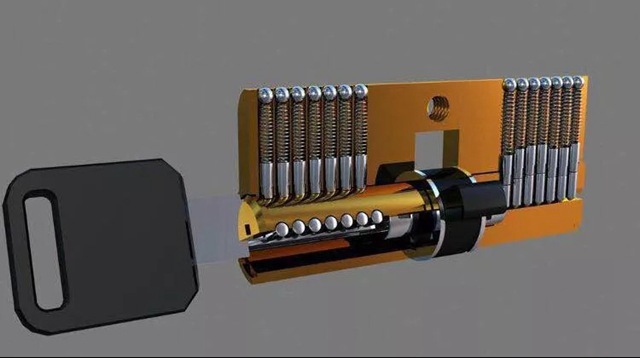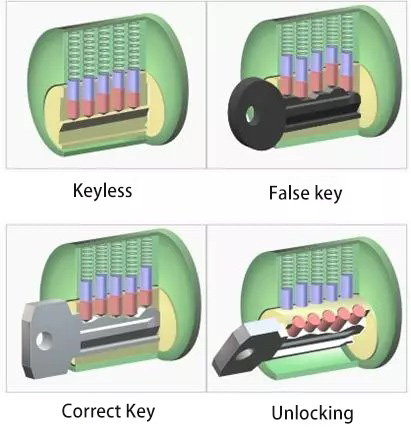In lock manufacturing, the concept of “cross-opening rate” (or “key compatibility rate”) refers to the likelihood that a single key can open multiple locks within a batch. This rate varies based on the intended use and security level of the locks and is regulated by national standards. Depending on security requirements, the cross-opening rate ranges from a few percent to one in ten thousand or even lower. This metric directly impacts the lock’s security reliability: a lower cross-opening rate indicates higher security.
Understanding Cross-opening Rate in Anti-theft Locks
For anti-theft door locks, manufacturers design locks with a set number of possible key combinations by controlling the machining precision and the number of lock pins. By producing locks in a repeated cycle of combinations, a certain level of cross-opening naturally occurs. In technical terms, the cross-opening rate is the percentage ratio of the number of locks that can be opened by a single key to the total number of locks tested.
For example, if a key can open three out of 10,000 locks in a batch, the cross-opening rate is 0.03%. This controlled percentage reflects the lock’s security; the fewer locks a key can open, the more secure the lock.
Lock Grades and Cross-opening Rates
In many countries, anti-theft door locks are classified into three grades based on cross-opening rates: A-grade, B-grade, and super B-grade. Each grade has specific standards:
- A-grade locks: The cross-opening rate is ≤0.03%, meaning three keys out of 10,000 might open the same lock.
- B-grade locks: The rate is lowered to ≤0.01%, where only one key out of 10,000 locks is likely to match.
- Super B-grade locks: With a rate of around ≤0.0004%, only four keys in a million would be interchangeable, making this the most secure level.
These gradings help consumers choose locks according to their security needs, with lower cross-opening rates signifying stronger protection.
How is the Cross-opening Rate Calculated?
To understand the cross-opening rate, it’s helpful to examine the structure of common pin tumbler locks, which are widely used in anti-theft locks. This type of lock contains sets of pins (typically five or six pairs of upper and lower pins) that move within corresponding pin chambers. When the correct key is inserted, the pins align along the shear line between the lock core and the outer casing, allowing the lock core to rotate and unlock. If the key doesn’t match, the pins block the core from turning, preventing the lock from opening.
The number of possible keys for a lock, known as the “tooth pattern count,” is determined by two main factors: the number of pin chambers and the number of pin length levels. The length of the pins is not arbitrary; it follows a specific range of increments, which limits the possible key variations and helps control the cross-opening rate.
Examples of Tooth Pattern Calculations
To illustrate, let’s consider some typical scenarios in lock manufacturing:
- Four-pin chamber with five pin levels: Here, the number of unique key patterns can be calculated as 5^4=625 possible combinations.
- Six-pin chamber with five pin levels: This configuration increases the pattern count significantly, yielding
5^6=15,625 possible key variations.
In practice, the total tooth pattern count is somewhat lower due to the exclusion of certain impractical or overly simple patterns that might compromise security. More complex tooth patterns directly reduce the cross-opening rate, as each combination is less likely to match another lock.
Ultimately, the cross-opening rate remains a vital standard for assessing lock security, guiding both manufacturers and consumers in choosing suitable locks for varying security demands.
ⁿ
Post time: Nov-06-2024






